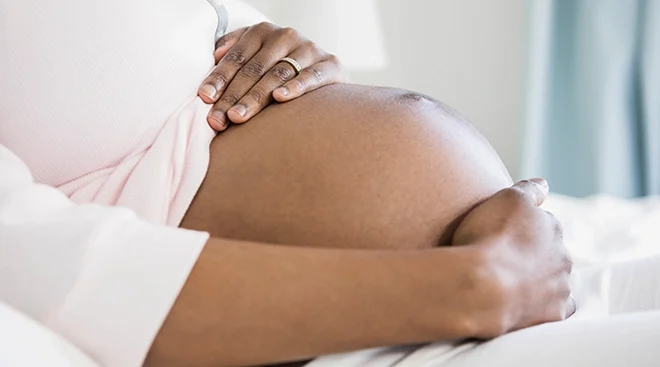Survey: 51% of BIPOC Moms-to-Be Had Procedures They Didn’t Consent to
Gaping disparities in maternal health care for people of color have long been an issue. Now, a recent survey of over 2,400 people has revealed statistics around mistreatment in prenatal care for BIPOC patients, including being coerced into decisions or undergoing procedures they didn’t consent to.
The research, published last week in the medical journal Birth, was conducted by the University of California San Francisco and sought to uncover the mistreatment that occurs during maternity care to identify better solutions for improving maternal health outcomes. The two methods of mistreatment the survey focused on were coercion (whether people felt pressured to have a procedure) and consent (whether people affirmed with their doctor that it was okay to do the procedure).
Results show that 39 percent of people of color felt pressured by their doctor, compared to 25 percent of white patients. Notably, people of color were almost twice as likely to be pressured into an episiotomy (5.4 percent vs. 2.8 percent) or a c-section (14.4 percent vs. 8.6 percent).
The study also reveals that 51 percent of people of color surveyed had been subjected to perinatal procedures without their consent, compared to 36 percent of white people. Notably, Black patients were 89 percent more likely to have procedures they didn’t consent to performed on them compared to white patients.
It’s critical for BIPOC patients to feel informed and be empowered to advocate for themselves. But clearly, systematic change is also needed. “When we center the most vulnerable, socially marginalized and excluded groups in healthcare policy and practices, everyone benefits,” Rachel Logan, PhD, lead author of the study, told The Bump, “Right now, before the Senate is the Momnibus bill, which includes policies to improve services related to pregnancy and birth, reduce the high rates of maternal morbidity and mortality that disproportionately impact birthing people of color but other communities as well, create systems of accountability for all pregnancy and birth-related care, and support families in having the healthiest babies.”
What’s more, you can take action to help bring about change. “People should contact their legislators and tell them to vote for the Momnibus bill and ensure that people maintain access to the full range of reproductive health options, including contraception and abortion.” Logan said. “Reproductive coercion in any form is unacceptable and not in the best interest of people who have children and/or the capacity to give birth.”
Navigate forward to interact with the calendar and select a date. Press the question mark key to get the keyboard shortcuts for changing dates.





















































